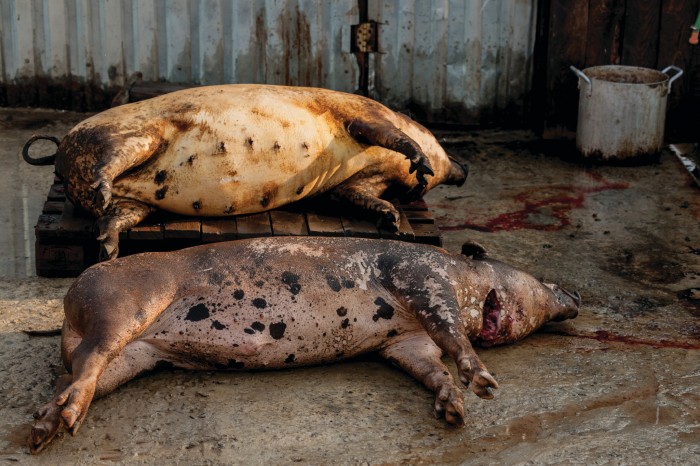China’s pig herd could halve by the end of this year, as ASF takes a massive toll on the country’s pig production, analysts at Rabobank are predicting.
In its latest quarterly global pork report, Rabobank estimates that the Chinese herd is already 40% down year-on-year, due to the huge number of pigs slaughtered in the first six months. Pork production in China is expected to fall by 25% this year, and a further 15% in 2020.
Official Chinese figures show breeding herd numbers were nearly 27% year-on- year at the end of June, and the overall herd 26% down.
But herd losses in some regions are believed to be as high as 40-60%, with overall losses estimated at 40%, Rabobank said. New cases are still being regularly reported.
Large inventories have been preventing significant price rises, but that is changing, with live pig prices 15% up in July and 40% higher year-on-year, and pork prices 20% up in July compared with June. Chinese pork imports rose 62% in May and were 20% up in the first five months of the year.
ASF is also spreading rapidly in Vietnam, where production could be 20% down in 2019, as well as Cambodia and Laos and has been detected in North Korea.
“The unprecedented supply loss in China has altered global trade flows and will continue to do so,” Rabobank said.
For example, EU pork exports to China were up 41% year-on-year in the first five months of 2019. However, ASF is stifling expansion in Eastern Europe, it added.
THE CHINA EFFECT
- EU fresh and frozen pork exports to China were up 88% year-on-year in May, to 96,500 tonnes, accounting for 44% of EU exports;
- Value almost trebled, as average prices rose from €1.48/kg last May to €2.09/kg;
- UK pork shipments to China more than doubled year-on-year in May at 7,200t; and
- Overall UK fresh/frozen pork shipments were up 31% year-on-year, at 21,200t, the highest figure on record.




